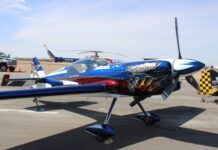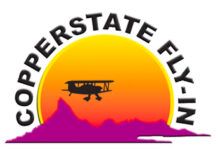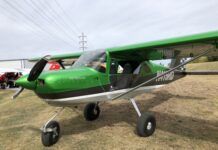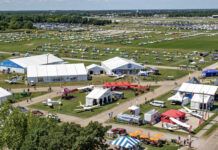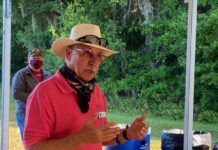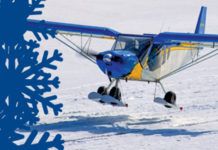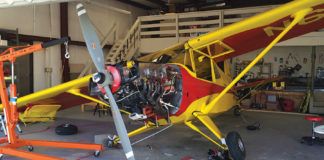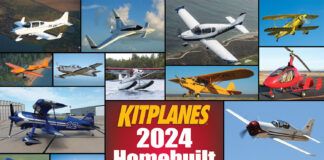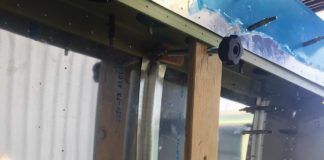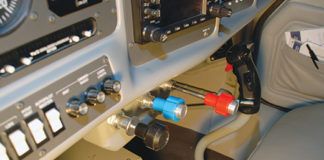Not too many days ago, a dry lakebed near our home became the temporary residence of about 70,000 people as the annual Burning Man Festival took over the Black Rock Desert for a week. Dave Hirschman of AOPA did a wonderful write-up of what it is like to fly in to event, and a little bit of what it is like to stay there for awhile. The first people to fly in to the early festivals did so almost twenty years ago, and the informality back then is remarkable – compared to what it is now. I took this shot from 11,000’ MSL, deciding it was far easier to just stay on top and watch and listen (on CTAF) than to try and join in.
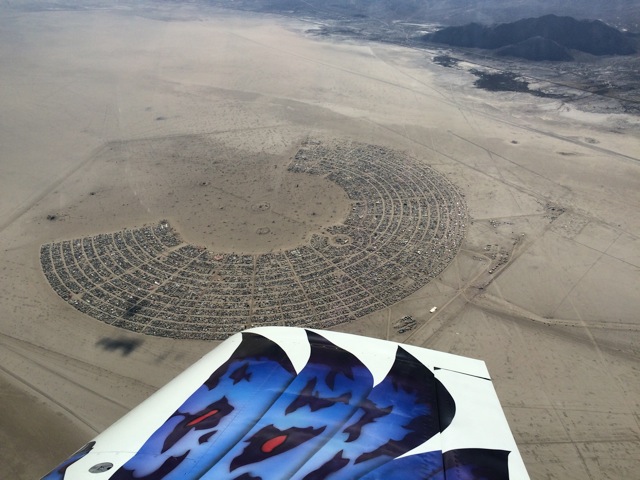
What started out as an informal, no-rules gathering of artistic types has blossomed into an international event that has thousands of volunteers – including a bunch that run the temporary “airport” on the Playa. Landing there requires a lot of reading, an online test, filling out manifests, buying tickets in advance, paying landing fees – all that stuff that the founders must look at today and say “huh?” As Hirschman points out in his article, there are about 32 pages of reading to do in order to be prepared to land and depart from Burning Man.
In contrast, there is this other fly-in I go to almost every year – some folks complain that it is a little complicated, although if you really boil down the procedures, its not THAT different from flying in to the same controlled airport any time of year. You fly up to the edge of the Class D airspace at a specific spot, altitude, and speed; are identified, and told what pattern to use for what runway. When you get in close, you are cleared to land. Like I said – not much different than going to any controlled airport, except that you’ll find the traffic a bit heavier than normal. The NOTAM usually runs close to 30 pages… but only a few of those are relevant to the average arriving pilot.
Once at this show, you don’t have to pay to park, and you don’t have to have tickets in advance. Tickets aren’t terribly expensive anyway. If you’re flying a homebuilt, you’ll never be turned away, and will always have a place to park. Departure is simple – and coming and going is surprisingly more easy than most people think.
That gathering in the Black Rock sounds and looks pretty neat – and I suppose that after you’ve done the procedure a few times, it becomes as second nature as the one at AirVenture (that “other” fly-in). But when I read the 32 pages of rules for flying into the desert, I can’t help but wonder if this is what the founders of this event celebrating freedom of expression really intended.


